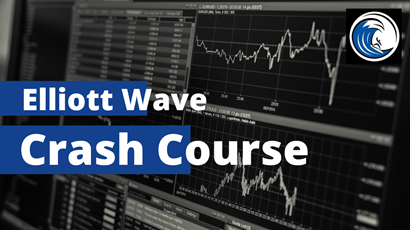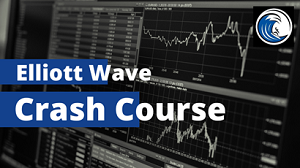
Learn the Why What and How of Elliott Wave Analysis By Elliottwave International
This three-video series demolishes the widely held notion that news drives the markets and provides a basis for using Elliott wave analysis in your own trading and investing decisions.
The flaw in Economics 101 is one of the hardest things for many investors to accept.
For over ten decades, the mainstream financial world has embraced the view that external news events drive trend changes in the markets. In less than ten minutes, EWI’s Senior Tutorial Instructor Wayne Gorman shatters that very idea into a fine dust, swept away into thin air.
Recall this expression from a famous, Nobel Prize winning economist:
“Economic reasoning will be of no value in cases of uncertainty.”
But as Wayne puts it:
“Isn’t that what we have in financial markets: cases of uncertainty? We need a different type of reasoning, one that will help us to avoid the pitfalls shown on the previous charts. That’s why the Wave Principle is so important. It offers a unique perspective and a market discipline of rules and guidelines that help investors avoid buying at tops and liquidating at bottoms. It helps to explain and understand trends before they happen.”
The flaw in Economics 101 — cause-and-effect theory — is one of the easiest things to prove. But it’s also one of the hardest things for many investors to accept. Now is the time to do so through the Elliott Wave Crash Course Video Series.
Here’s the rundown of the three-video series:
- Video 1: Why Use the Wave Principle | This video uses real headlines, actual events and charts to provide a comprehensive look at what the financial media say drives the markets and why their “fundamentals” are usually wrong. And more importantly, you’ll learn why Elliott wave analysis is your best tool for forecasting the markets.
- Video 2: What is the Wave Principle | Part 2 gives you a brief biography of Ralph Nelson Elliott, the father of the Wave Principle. But it also explains in vivid detail the recurring “motive” and “corrective” patterns Elliott discovered in the DJIA in 1938.
- Video 3: How to Trade the Wave Principle | This final video of the series goes past the history and serves up the “meat and potatoes” of Elliott wave analysis, sharing real charts and strategies for position management, such as entry, stop, target and risk/reward assessment. After watching this video, you’ll know the rules and guidelines and our favorite wave patterns for trading.

